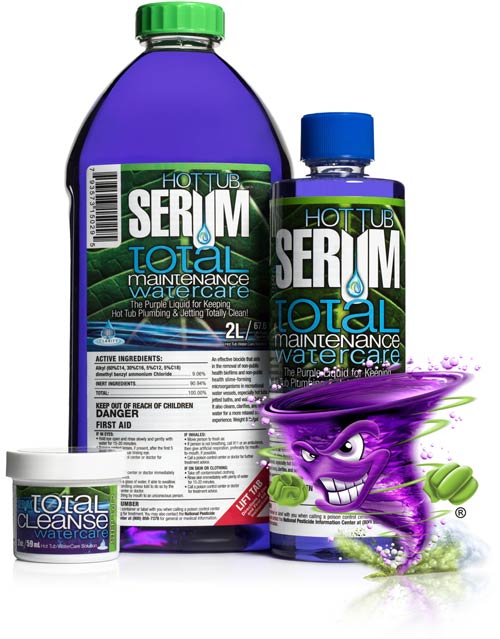We know that both new spa owners and those who may have had their spas for years often have questions regarding spa chemistry. We hope you find this information easy to read and helpful.
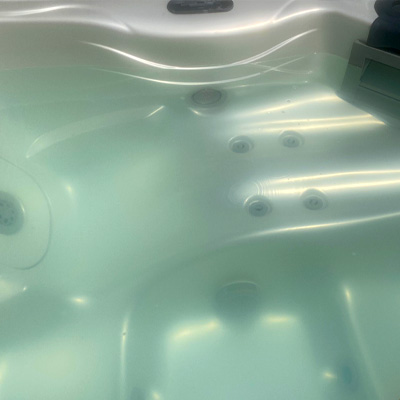 Phosphates
PhosphatesSimply put, you don’t want phosphates in your spa water. They will impair the ability of your primary sanitizer to kill bacteria & other pathogens. They may also manifest as foaming in your spa.
Phosphates are measured in extremely small concentrations. They are measured in ppb (parts per billion) rather than ppm (parts per million) as with all other readings for your spa water.
Ideally you want no phosphates (0 ppb), however measurements below 100 ppb are generally not going to cause an issue. Anything over 500 ppb is definitely problematic and requires removal of the phosphates using a Phosphate Removing product.
Most municipal water will have little to no phosphates. However this may not be true in agricultural areas (phosphates are also fertilizers) or areas with high metal content in the water as some agents used by cities to remove metals also contain phosphates.
If your water source is a well and/or you are in an agricultural area, you should check for phosphates.
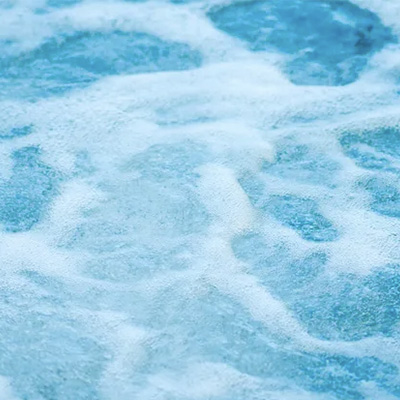 Oxidizers
OxidizersOxidizers are necessary in spa water to remove accumulated biologic waste, such as dead bacteria, skin cells, and sweat.
In many spas, you have three different oxidizers. Both chlorine & bromine are primary sanitizers, but they are also oxidizers. Ozone is an unstable form of oxygen, specifically O3, and an oxidizer. Lastly, MPS, or potassium monopersulfate (also called potassium peroxymonosulfate) is an oxidizer.
The oxidation demand in a hot tub is very high as you have a small amount of water being used for months and quite a lot of biologic waste being added. Consequently, using only a primary sanitizer, even with ozone, is generally not sufficient to maintain clear, clean water in your spa. The weekly addition of MPS ensures all biologic waste is removed from your spa.
Additionally, because both chlorine and bromine regimens can be compromised, the weekly addition of Serum Total Maintenance which, like chlorine & bromine, is also an EPA Registered biocide, will ensure your spa water is always pure & pristine, ready for you to enjoy your hot tub.
Notes:
- Do not use your spa for at least 30 minutes after you add MPS. It’s best to add MPS after using your spa.
- Be sure to leave your spa cover open for 30 minutes after adding MPS to your spa. MPS will off gas and will bleach your spa pillows and cover underside if you don’t leave your cover open.
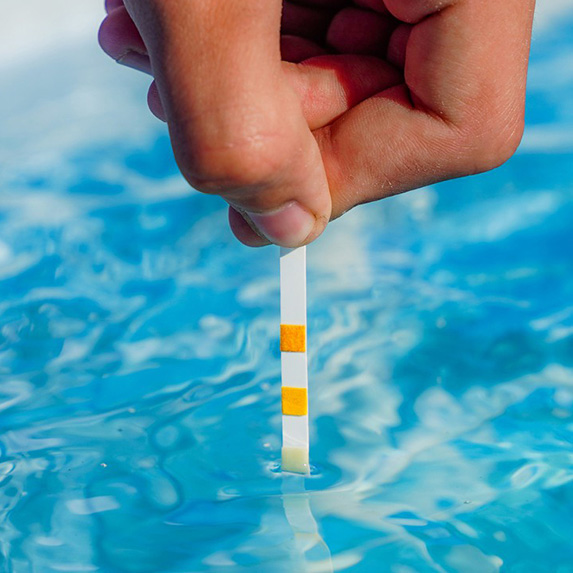 Total Alkalinity
Total AlkalinityTotal Alkalinity (or TA) is essentially all of the dissolved chemicals in your spa water that can also “absorb” acidity. These generally include carbonates, bicarbonates, hydroxides, and cyanurates.
This can be a bit confusing but Total Alkalinity is not the same thing as the alkaline side of the pH scale (from 7 – 14). However, they are related because Total Alkalinity is what’s called a pH Buffer. It helps moderate pH swings in your spa water. It does it by sort of acting like an acid “sponge”, absorbing and releasing acids.
Ideally you want 80 – 120 ppm Total Alkalinity in your spa. This is quite important for a couple reasons, both related to maintaining a proper pH level in your spa.
- If you are using chlorine as your sanitizer, your pH must be in the 7.2 – 7.6 range in order to effectively kill bacteria & other pathogens.
- Running your jets with air introduced will increase your pH as will all forms of aeration. However, as a pH Buffer, a proper level of TA will minimize this upward drift.
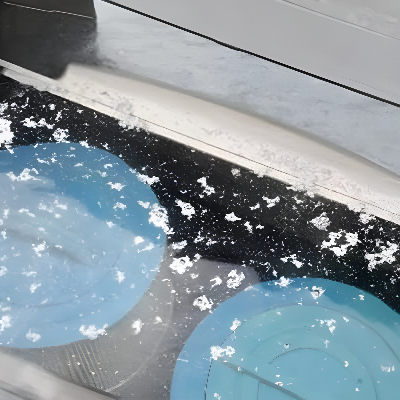 Calcium - Total Hardness
Calcium - Total HardnessTotal Hardness is a measure of the calcium and magnesium concentration in water, though usually we are only concerned with calcium. “Hard” water has a high level of calcium, typically above 200 ppm, or 12 grains.
Though you might think soft water (below 50 ppm) is good, it is not for a spa. It turns out that water without minerals dissolved in it, commonly called distilled water, is slightly corrosive. Over time, soft water can pit the surface of metal parts in your spa.
Calcium in your spa water also helps reduce foaming. Hard water is called “hard” because its hard to develop soap suds with hard water.
Lastly, though not as much as Total Alkalinity, calcium also serves as a bit of a pH buffer. It helps stabilize the pH in your spa water.
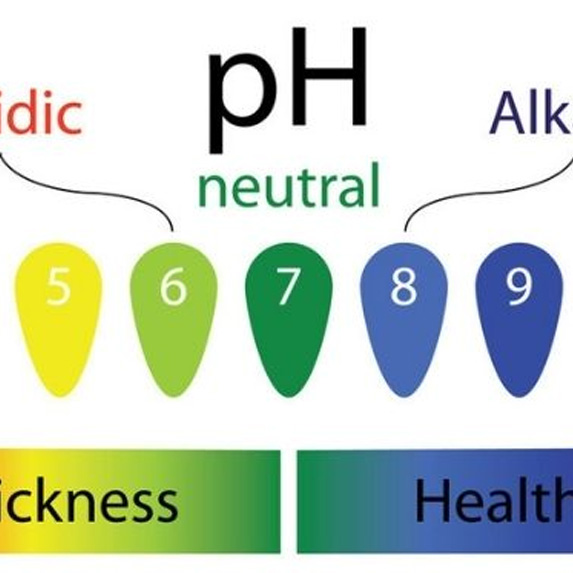 pH - What is it?
pH - What is it?pH is a measure of the relative acidity or alkalinity of water. pH is short for “power of Hydrogen”. Essentially it is a measure of the amount of dissolved hydrogen.
It is measured on a scale from 0 – 14 with 7 meaning the water is neutral. Below 7 is acidic and above 7 is alkaline (also called basic).
pH is also a logarithmic scale, meaning each whole # is 10 times greater or lesser the whole # next to it. In other words, water with a pH of 4 is 10x more acidic than water with a pH of 5.
Keeping pH in the proper range of 7.2 – 7.6 is particularly important in spa water for at least 3 reasons. Note that this means your spa water is just slightly alkaline.
- Your skin has a pH, usually around 5.5. pH below this can cause skin redness & irritation. Other the other hand, pH above 8.0 can cause dryness or tight feeling skin and worse.
- When using chlorine as a sanitizer keeping pH in the proper range is critical as chlorine looses its ability to kill bacteria and other pathogens rapidly as pH rises.
- Low pH can result is corrosion of the metal elements in your spa. High pH will result in scaling – calcium deposits everywhere below the water line.
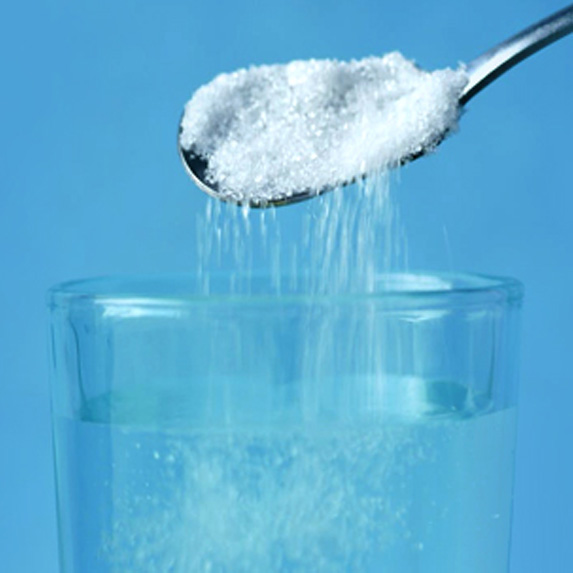 Salt Sanitation
Salt SanitationSalt sanitation regimens for pools & spas have been around for quite a long time. The “Salt” is either sodium chloride (basically table salt) or sodium bromide. A process called electrolysis, using a very low voltage and low amperage DC current, produces either chlorine or bromine in the spa water.
Because the chlorine or bromine is exactly the same as when using other chlorine or bromine regimens, the advantages & disadvantages of chlorine or bromine with salt systems are the same as with other sanitation regimens.
However, salt systems do have some unique advantages. They will make both the water feel softer and your skin feel softer when you dry off. No other chemicals are involved and because you do not continuously add chemicals you can typically drain and refill your spa annually, rather than 3 – 4 times a year as with other sanitation systems.
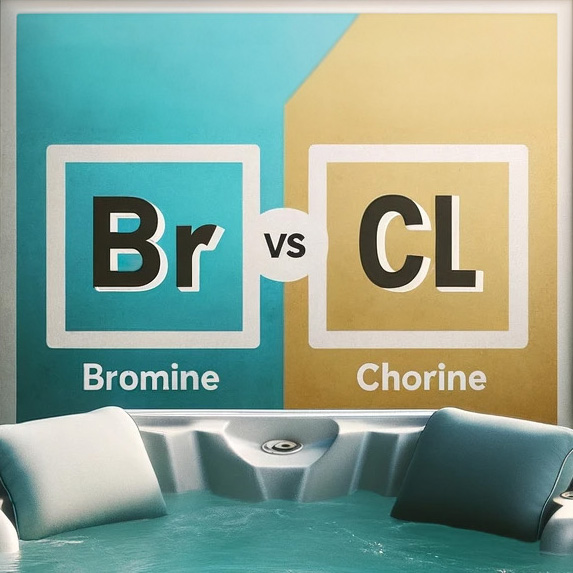 Bromine vs. Chlorine
Bromine vs. ChlorineA very common debate among spa folks is whether chlorine or bromine is the best spa sanitizer. Both have their advantages but since chlorine is, by far, the most common sanitizer in pools, its also the most commonly used in hot tubs. That said, bromine has some distinct advantages over chlorine in a hot tub.
Unlike some less commonly used spa sanitizers, both chlorine and bromine are sanitizers and oxidizers. This means they both kill pathogens and remove biologic waste in your spa water.
Chlorine
The ability for chlorine to work effectively is strongly related to maintaining pH in the range of 7.2 – 7.6 and changing your spa water every 3 – 4 months. Chlorine also tends to dissipate out of spa water given its rather warm temperature. Lastly, the combination of chlorine and biologic wastes results in something called chloramines, which have the characteristic very strong chlorine odor.
Bromine
Bromine is equally as affective as chlorine but has none of the disadvantages of chlorine other than being somewhat more expensive. Bromine is not affected by pH imbalances, does not dissipate out of spa water, and its combination with biologic wastes, bromamines, have relatively little odor.
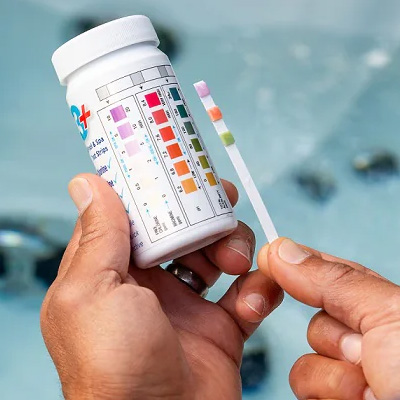 Testing Spa Water
Testing Spa WaterRegardless of the sanitation regimen you use with your spa, you should test your spa water, and make necessary adjustments, no less than once a week. This is an absolute. Some may claim this is not necessary. It is!
There are various methods to test spa water, including test strips, titration, and specialized equipment. The most commonly used, as they are quick, simple, and inexpensive, are colored test strips that generally measure these 4 chemicals, though some will also measure for Free Chlorine and Cyanuric Acid (CYA).
- Total Chlorine / Bromine
- pH
- Total Alkalinity
- Calcium (Total Hardness)
These test strips should be inserted several inches below the water line and then read immediately as the colors will start to change within seconds. Notably, the pH test will change most quickly so its a good idea to check it first.
Titration is also a common method particularly for those who are also testing their pools. This involves the use of reagent drops (generally 5) and usually measures only Total Chlorine / Total Bromine and pH. The advantage to titration is its quite accurate and colors do not change quickly.
Several types of testing equipment are available that are highly accurate, but generally start at $100, so most spa owners stick with colored test strips.
Notes:
1) When testing pH be sure to wait 4 hours or so after adding pH Up or pH Down before testing for pH again. Testing sooner will result in an inaccurate reading.






